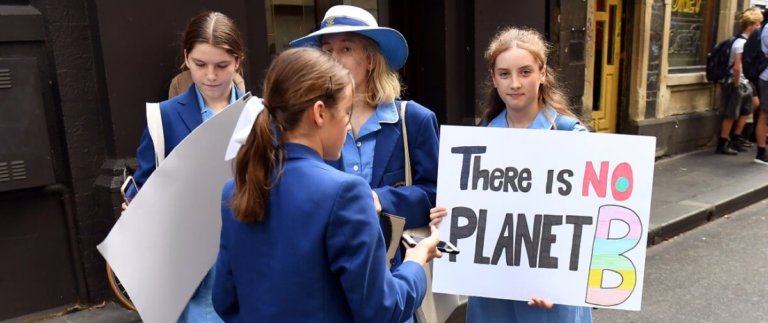
If Greta Thunberg has taught us anything at all, it’s that youth is no barrier to bringing meaningful change.
In the span of less than a year, the 16-year-old Swedish activist has galvanised the movement for climate action, which has stagnated in the hands of people several times older than her.
There’s still a long way to go with a problem as unprecedented in scale and complexity as solving the climate crisis. The consensus of leading climate scientists gives us 12 years to limit global warming to a maximum of 1.5 Celsius, beyond which we risk droughts, floods, extreme heat and poverty for hundreds of millions of people. A massive restructuring of how we do things is inevitable, including cutting down carbon emissions to 45 percent by 2030 and zero by 2050.
But the point Thunberg has driven home is that young people have the most to lose from not acting now as they would be the ones inheriting an increasingly inhabitable planet.
More importantly, history has shown actions led by students and education institutes have led to change. One such movement is the student-led call for public institutions to divest their holdings in fossil companies, which argues that these institutions have a moral responsibility to divest themselves from such odious profits. Six months since its launch in November 2012, over 300 campuses in more than 100 US cities, states and religious institutions have started active divestment campaigns and endowments of fossil fuel stocks and bonds worth billions of dollars have been divested from.
Divestment may feel like too large an action for an individual, especially a young one new to the issue. But what Thunberg and this example of college activism show is that young students can contribute – and their contribution can be meaningful.
It doesn’t have to be a speech at the United Nations or a battle with oil giants like Chevron. Getting started is what counts and incremental steps will ultimately add up.
We spoke to several student climate strikers and activists on some of the most effective, yet most often overlooked ways students can contribute. Here’s what they had to say:
Take the first step
For a long time, Samson McCrackan, a climate striker from West Australia felt like she couldn’t do anything to stop the climate crisis. It felt “hopeless” as no one seemed to listen and those who took action were slandered and ignored by the media. Thunberg changed all this for the better, according to Sampson.
“My advice to people not knowing where to start is to see if there is any school strike presence in your local town/city and send them a message asking to join. The hardest part is breaking the ice and taking that step into the unknown, but once you’ve done that it gets easier!” she said.
Show up
Climate striker Olivia Boddington is a big believer in the power of the individual. The 16-year-old climate striker from Canberra, Australia thinks many people overlook the significance of everyday tiny acts as well as the importance of showing up.
“Showing up to strikes and protests is vital to the movement. A person can only get so far by cutting their own carbon emissions when most of the damage being done to our planet is by large corporations,” Olivia said.
Talk to each other
Collaboration can bring us far, as 18-year-old Clara McArthur of the Australian National University discovered at her city’s school strikes. Talking to one another and working together will be “the most effective way to prevent the climate crisis,” said the young student, who is also one of the organisers of the ACT School Strike 4 Climate.
Tackling the climate crisis is a big undertaking. At times, it can be depressing and lonely, but with similarly passionate people around you, it need not be.
Students can start environmental clubs at school or talk to teachers about development goals and the latest progress in sustainability technology, as well as “taking actions together to show everyone that this is the most important issue of our lives”.
Unite communities
Students should focus their efforts on actions that bring communities together, suggested Luca G Saunders, a climate striker from New South Wales. Community gardens, proper urban planning in small towns and bike paths can make it less necessary to use fossil fuels and more in contact with our fellow residents.
“By talking to your local MP, every student can work to get some projects like these started!” said Luca.
Go big
Individual actions matter and can make a “sizable impact” in reducing our overall carbon footprint, according to Julian Dautremont, Director of Programs, Association for the Advancement of Sustainability in Higher Education. This includes switching to a more plant-based diet, reducing meat consumption, biking, walking, carpooling, taking mass transit.
“Finally, responsible consumption, which to me is inclusive of buying less stuff in the first place and buying the most sustainable option when you do have to make a purchase, can help to accelerate the transition to a more sustainable and more equitable economy,” said Dautremont.
But for maximum impact, students will need to go big: “In general, participating in efforts to change larger systems is likely to be more impactful than any particular individual behaviour change.”
Liked this? Then you’ll love…
How to teach young students about climate change
Which country will be the first to make climate change education compulsory?







